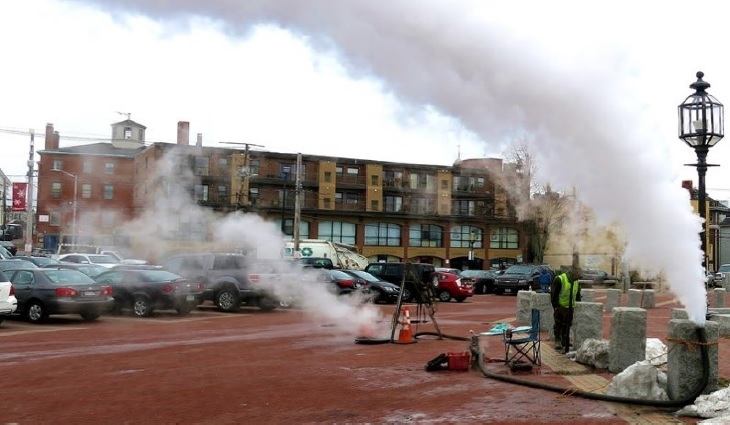
Info from CDPH safety bulletin issued May 2020…
The use of CIPP for sewer line and culvert rehabilitation is widespread throughout the country and abroad. Styrene-based resins are the most widely used. There is a possibility for chemical releases with CIPP processes. In addition to styrene, recent studies have shown numerous volatile chemicals being released during CIPP installations that have previously been unreported.
Migration of vapors from volatile chemicals can impact indoor air, resulting in exposure to building occupants. There have been over 130 CIPP exposure incidents reported in 30 states. A project involving a large diameter CIPP sewer line installation resulted in styrene vapors migrating into an office building, which exceeded acceptable exposure levels. Building occupants experienced health symptoms. Styrene was measured for up to three months following the CIPP installation.
Styrene is not the only chemical emitted, but it may serve as a surrogate for identifying vapor intrusion impacts.
Central nervous system depressant.
Mucous membrane irritant (upper respiratory tract, eyes, nose and throat).
Nervous system effects include headache, fatigue, changes in color vision, concentration and balance problems.
Potential to cause cancer.
Styrene and other toxic vapors can migrate during cure-in-place pipe (CIPP) installation into buildings through windows, doors, cracks in foundations, laterals, compromised plumbing connections, and subsurface voids, resulting in potentially harmful exposure to occupants.
Vapor migration is highly variable due to subsurface conditions, job size, and building characteristics.
Toxic chemicals in addition to styrene are released, which can pose a risk to public health.
Curing time for resins used in CIPP can take as long as 6 months.
Laterals may not be isolated even when sewer lines are bypassed.
Pouring water in drains and p-traps does not prevent vapors from migrating into buildings.
Four-gas meters used by First Responders are ineffective at identifying CIPP emissions.
Impacted individuals are often directed to call CIPP contractor with health concerns.
Health officials are not informed during or after exposure incidents.
Before sewer rehabilitation begins, provide information to residents and workplaces on the potential for vapor intrusion into the building with instructions to seek medical attention if exposure is suspected.
Instruct the public and workplaces to leave the building and contact the fire department if vapors/odors have entered the building.
Coordinate with local environmental and/or public health to provide a contact number if odors are detected during or after hours.
Document odor complaints and conduct indoor air monitoring when health symptoms are present.
Require setback distances that prevent public access to emission points.
Capture emissions near residences, schools and workplaces to prevent exposure.
Install a vent at the end of the line.
Conduct air monitoring in sewer laterals, especially if work is being done in areas near schools, day care facilities or other sensitive populations.
Install a cleanout as described in ASTM F2561-11. It allows the contractor to temporarily plug the lateral service to prevent vapor migration and contaminated discharge water into the lateral.
Ensure Safety Data Sheets with complete lists of chemical information are readily available during the project.